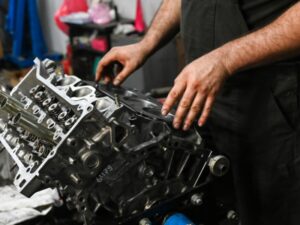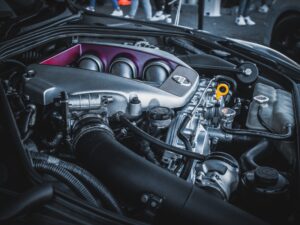Which Parts Are Replaced In A Kia Reconditioned Engine?
Suppose you’re considering replacing your Kia engine. In that case, you may wonder whether opting for a new or reconditioned one is better. While both options have advantages, reconditioned engines offer a cost-effective solution without compromising quality. This article delves into what parts are typically replaced in a Kia reconditioned engine, the steps involved in the process, the advantages of choosing this option, and tips on finding a trustworthy provider.
Why choose a reconditioned Kia engine over a new one?
Choosing a reconditioned engine has several advantages:
- Cost savings: Reconditioned engines are generally more affordable than new engines. This can help you save money without sacrificing quality.
- Environmental impact: Reusing existing parts reduces waste and the need for new materials, making it a sustainable choice.
- Same performance: A properly restored engine can deliver the same power and efficiency as a brand-new one.
- Quality assurance: Reputable providers often offer warranties on reconditioned engines, providing peace of mind.
- Quick turnaround: The restoration process is often faster than waiting for a new engine, enabling you to get your car back on the road faster.
Which components are inspected before reconditioning?
The reconditioning of Kia engines begins with a meticulous inspection of multiple components:
- Cylinder head: Checking for cracks or warping is crucial, as this can affect engine performance.
- Block integrity: The engine block is examined for any signs of damage or excessive wear.
- Pistons and rings: These parts are scrutinised for wear, as they are vital for maintaining compression.
- Crankshaft and bearings: Ensuring these components are in good condition is essential for smooth engine operation.
- Camshaft: The camshaft is assessed for wear on the lobes and bearings, which can impact valve operation.
Which specific parts are typically replaced during Kia engine reconditioning?
Reconditioned engines often require replacing several key components to restore their functionality:
- Piston rings: Technicians replace worn piston rings to ensure proper sealing and compression.
- Gaskets and seals: Typically, they replace all gaskets and seals to prevent leaks and maintain engine integrity.
- Bearings: Main and rod bearings are often replaced to restore smooth operation.
- Timing chain or belt: If applicable, technicians replace the timing chain or belt to ensure proper engine timing.
- Oil pump: Technicians may install a new pump to ensure optimal oil circulation and pressure.
How are replaced parts selected for a Kia reconditioned engine?
The selection of parts for replacement during the reconditioning process involves a careful evaluation of several factors:
- Condition assessment: Technicians assess each component for wear and damage, deciding whether it needs replacement.

- Performance standards: Parts not meeting specific performance standards or tolerances are flagged for replacement.
- Manufacturer specifications: Replacement parts must comply with Kia’s specifications to ensure compatibility and reliability.
- Quality of replacement parts: Only high-quality parts are selected for replacement to ensure the longevity of the reconditioned engine.
- Experience of technicians: Skilled technicians use their expertise to decide which parts need replacement.
What is the quality assurance process for reconditioned Kia engines?
Quality assurance is a critical step in the reconditioning process, ensuring that the engine meets high standards:
- Thorough inspection: After the restoration process, the engine is thoroughly inspected to verify the condition of all components.
- Testing: Technicians subject engines to various tests to verify their performance.
- Documentation: The report provides a full breakdown of the restoration process, including replaced parts and testing.
- Warranty: Many reputable providers offer warranties on their reconditioned engines, providing quality assurance.
- Ongoing support: Some suppliers often offer continuing support and advice to customers regarding maintenance.
Can a reconditioned Kia engine perform as well as a new one?
If done correctly, a reconditioned Kia engine can perform comparably to a new engine. Here’s how:
- Quality of workmanship: Skilled technicians ensure that all reconditioning processes meet high standards, allowing the engine to function effectively.
- Use of high-quality parts: By using high-quality replacement parts, the engine can achieve performance levels similar to a new engine.
- Thorough testing: Testing the engine after reconditioning helps ensure it meets performance benchmarks.
- Regular maintenance: Maintaining the engine with routine oil changes and servicing can enhance its performance longevity. In addition, understanding common Kia engine issues in older vehicles can help you address problems proactively and ensure your car’s longevity.
- Owner responsibility: How owners treat their vehicle post-reconditioning can impact overall performance. Responsible driving and regular checks contribute to the engine’s durability.

Where can you find reputable providers of reconditioned Kia engines?
Finding a trustworthy provider is crucial for receiving a quality reconditioned engine. Here are some tips:
- Research online: Look for local companies specialising in Kia engines and read reviews from previous customers.
- Ask for recommendations: Friends or family with similar work can provide valuable insights.
- Check qualifications: Ensure the provider’s technicians have comprehensive training in engine dyno testing and possess the necessary certifications.
- Warranty offerings: Choose a provider that offers a warranty on its reconditioned engines, which indicates confidence in its work.
- Experience in the industry: Companies with a long-standing history in engine reconditioning are often more reliable.
How can you maintain a reconditioned Kia engine for optimal performance?
To ensure your reconditioned engine continues to perform well, consider these maintenance tips:
- Regular oil changes: Change the oil and filter per manufacturer recommendations to keep the engine lubricated.
- Monitor fluid levels: Regularly check and top up coolant, brake fluid, and transmission fluid.
- Inspect belts and hoses: Periodically check belts and hoses for wear, replacing them as needed.
- Keep it clean: Maintain the engine bay cleanliness to prevent debris from entering vital areas.
- Drive responsibly: Gentle driving can help extend the life of your engine and prevent undue stress on its components.
Ready to give your Kia engine a new life?
If you’re considering replacing your Kia engine with a reconditioned one or need a reliable option, look no further than Hyundai & Kia Engines. Our team specialises in supplying, fitting, and servicing Hyundai and Kia engines. With a commitment to quality, competitive pricing, and customer satisfaction, we are your trusted choice for engine solutions in Victoria, Australia. Contact us today for a consultation and ensure your vehicle runs at its best!

